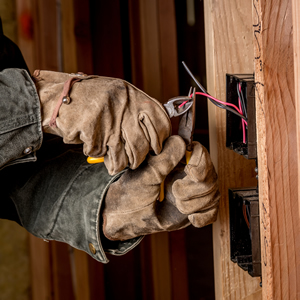[breadcrumb]
 How Can a Construction Insulator Get Mesothelioma by Occupational Exposure to Asbestos?
How Can a Construction Insulator Get Mesothelioma by Occupational Exposure to Asbestos?
Insulation that contained asbestos was installed in homes, businesses, public facilities, industrial plants and other buildings throughout the 1900s. Because insulators worked directly with products that contained asbestos, their risk of developing asbestos-related diseases was heightened. When asbestos-containing insulation was installed behind drywall between the studs, it could rip and tear, which could cause the asbestos fibers to be released into the air. This type of installation also often required cutting to fit it into tight spaces, so the fibers could also become dislodged in this manner.
Construction workers who worked to renovate buildings were at a high risk of being exposed to asbestos. As they pulled out old asbestos materials and installed new materials, dangerous asbestos fibers could become dislodged into the air where these workers could breathe them in.
Locations in the United States for the Highest Employment Rates for Construction Insulation Workers
According to the U.S. Bureau of Labor Statistics, there are currently more than 58,600 insulation workers employed in the United States. States with the highest employment rates for floor, ceiling and wall insulation workers include:
- Texas
- California
- Florida
- Louisiana
- Virginia
Similar Occupations as Construction Insulators
Similar occupations as construction insulators include the following:
- Boilermakers
- Carpenters
- Construction workers and laborers
- Drywall and ceiling tile installers and tapers
- Hazardous materials removal workers
- Masonry workers
- Mechanical insulators
- Plasterers
- Roofers
- Sheet metal workers
- Stucco masons
Lawsuits and Settlements Involving Construction Insulators and Mesothelioma
A number of lawsuits have been filed against manufacturers of asbestos-containing insulation. A Massachusetts jury awarded $6.8 million against New England Insulation in 2017 to the family of a man who was exposed to asbestos while working as a part-time insulator when he was younger.
A 1996 verdict of approximately $3.5 million was awarded to the estate of a man who worked from 1963 to 1966 with the Kaylo insulation product. A California jury awarded more than $27 million to the spouse of an insulator for Owens-Illinois where he was exposed to asbestos from 1950 to 1958. The verdict included $11 million in punitive damages after the jury found the defendant fraudulently concealed the health hazards of their products.
One of the earliest asbestos lawsuits was against a leading asbestos manufacturer, Johns Manville Products Corp. and several other manufacturers of asbestos insulation. The man began working as an installer of asbestos insulation in 1948 until 1966. During his career as an insulator, he was exposed to asbestos dust. His health steadily declined since 1959 and he was diagnosed with asbestosis in 1966. He was awarded $200,000 for the damages he sustained. Johns Manville was the only defendant remaining at the time of the verdict.
Studies Related to Insulators and Asbestos
A few scientific studies have discussed the dangers related to asbestos insulation. A study published in the British Journal of Industrial Medicine analyzed records of 162 male insulators who worked in Belfast in 1940. They found an excess number of deaths of these men from asbestos-related diseases, including mesothelioma and lung cancer. A 2016 study published in Epidemiology and Health found the rate of pleural mesothelioma for insulators was 10 times greater than the rate of those in other industries.
A researcher noted in 1990 that there was a decline in fatalities among insulators linked to the reduction in asbestos exposure that occurred between 1967 and 1986. He had previously conducted extensive research during the 1960s that found a significant increase in asbestos-related illnesses among insulation workers.
Types of Asbestos Products Used by Construction Insulators
Construction work has been one of the most prominent industries where workers could have been exposed to asbestos, both during the massive reign of asbestos products and currently. Construction insulators installed asbestos-containing insulation in a variety of locations, including in attics and to insulate heating, air conditioning and ventilation systems. Spray-applied insulation was also applied in attics and in ceilings and other locations.
Additionally, construction insulators may have applied block insulation that contained asbestos. This form of insulation was applied to concrete blocks throughout homes, apartments and other buildings. Insulation was also installed in walls to help maintain temperatures.
Asbestos-containing pipe insulation or pipe covering was also used to control temperature of hot pipes. Valve insulation jackets were used on boilers and pipe work in commercial and residential construction settings.
Manufacturers of Asbestos Products Used by Construction Insulators
Manufacturers of products that contained asbestos that insulators used include:
- A C & S
- P. Green Industries
- Armstrong Contracting and Supply
- E. Thurston & Sons
- Celotex
- CertainTeed Corporation
- Combustion Engineering
- Crown Cork and Seal
- EaglePicher
- Ehret Magnesia
- Thurston & Sons
- Ehret Magnesia
- GAF Corporation
- Garlock
- Johns Manville
- Kaiser Aluminum
- Keasbey & Mattison
- National Gypsum Company
- Nicolet
- Owens Corning
- Owens-Illinois
- Pacor Incorporated
- Pittsburgh Corning
- Rock Wool Manufacturing
- Shook & Fletcher
- The Flintkote Company
- UNARCO
- Western MacArthur
- R. Grace & Co.
